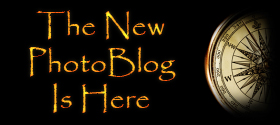Stock photography is
a method of selling photography which relies on a library of photos rather than a photographer being commissioned to take a photo of a particular subject. Micro stock agencies are the Internets answer to the traditional stock photography agencies. In many ways stock photography was an industry waiting to be transformed by the Internet. The process of both contributing to and buying from a traditional agency was both costly and time consuming. The ease with which photos can be submitted and purchased over the Internet results in the cost per photo being significantly reduced. Many in the industry believe micro stock agencies are responsible for the devaluing of a photographers work. This may be true, however the micro stock agencies will never be short of people willing to sell their work at cut price rates as there are countless amateur and semi-professional photographers who can now submit their work for the cost of an internet connection rather than the expensive process of sending out prints
or negatives. Dozens of micro stock sites have started in recent years. All the sites accept jpegs of at least 3 million pixels saved at the highest quality. For legal reasons they cannot accept an image with a logo in it(such as a can of coke) or a recognisable human face unless it is accompanied with a model release statement. Below are reviews to the first four stock websites I used. These day I am most active on newcomer Adobe Stock due to their bonus program and income similar to Shutterstock and iStock.

|
Shutterstock is my personal favourite due to the fast response to submissions and the income it produces. It pays between $0.25 to $120 USD per download depending on licence. Although the majority of sales are $0.25 at first this is compensated by the number of sales made. Shutterstock is the largest subscription based micro stock site. The business model they use encourages large numbers of sales. If a customer finds a picture on the site they like they must purchase a months subscription. This allows them to download 25 photos a day for 1 month (750 pictures). This type of site is aimed at companies who use large numbers of photos. It does not take long before you are getting daily sales on Shutterstock and it soon adds up. Most of what I send to shutterstock gets accepted. Good reasons are given if something gets rejected. I found it useful feedback to improve my photography.
Dreamstime has
an 'Alexa' site ranking just behind Shutterstock and my experience the revenue it creates is less initially. It is not a subscription based site. Photographers start by getting $0.50, $1, and $1.50 depending on the size of the file downloaded, plus an extra 20% if you give Dreamstime exclusivity on the image. As images gain sales they are sold for more and the amount the photographer gets goes up. Dreamstime is a very attractive and well designed site. In 2007 Dreamstime introduce their own subscription payment method and since then they have overtaken Shutterstock in traffic rank. Both Dreamstime and Shutterstock offer an extended or enhanced license so contribution photographers can earn more money.

|
Big Stock Photo is
the smallest of the four sites, and has the longest delay from submission to response. Big stock has the lowest standards for images. Many of my pictures on this site are ones I like but have been rejected by the other two sites. Even though sales on this site are very slow, you lose nothing by putting them there as all three sites offer a non-exclusive contract, i.e. you can put the same photo on all three sites and earn money from each as the photographer always keeps the copyright to the
image. In 2009 Big Stock merged with Shutterstock. The move was designed to allow shutterstock to hit the ground running with a credit based stock model to rival iStock and Dreamstime
iStockphoto is
owned by Getty. Corbis and Getty are the two largest traditional stock photography companies on the planet, and between them they dominate the industry. You may think it strange that a traditional stock site owns a micro stock site which undercuts its parent company's product, others may think it is a shrewd move in a rapidly changing industry. istock has the highest rank of any micro stock site I have encountered, it also demands the highest standard from contributing photographers.
So high in fact that it took me a few years to get a photo accepted there.
![]()

